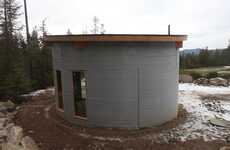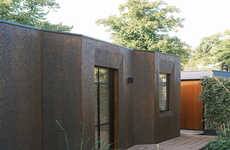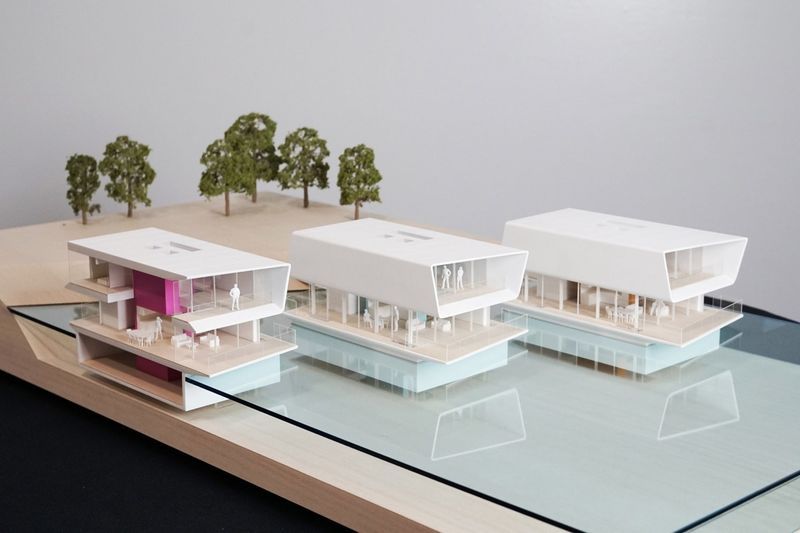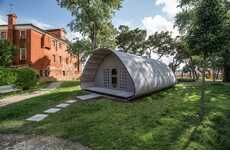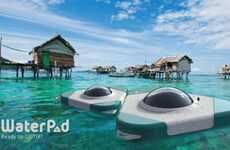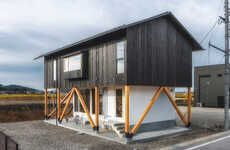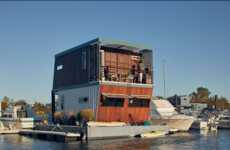
Grimshaw and Concrete Valley Develop Climate Change-Proof Concepts
Kalin Ned — May 28, 2020 — Art & Design
References: grimshaw.global & dezeen
As the threat of climate change is amplifying and many communities have to deal with increased risks of flooding, natural disasters, and pollution, architects are creating and developing concepts to assist in times of hardship—the Modular Water Dwellings by British studio Grimshaw and Dutch manufacturers Concrete Valley are a great example in this space.
The Modular Water Dwellings are made out of concrete pontoons that "support a lower deck with walls and columns with a concrete living pod on top." These units will be prefabricated off-site and their modular quality will allow them to be more cost-effective to produce.
The concept of the flood-proof dwelling comes at a critical time as the Intergovernmental Panel on Climate Change expects sea levels to rise "as much as 1.1 meters by the year 2100."
Image Credit: Dezeen
The Modular Water Dwellings are made out of concrete pontoons that "support a lower deck with walls and columns with a concrete living pod on top." These units will be prefabricated off-site and their modular quality will allow them to be more cost-effective to produce.
The concept of the flood-proof dwelling comes at a critical time as the Intergovernmental Panel on Climate Change expects sea levels to rise "as much as 1.1 meters by the year 2100."
Image Credit: Dezeen
Trend Themes
1. Modular Water Dwellings - The concept of flood-proof dwellings presents a disruptive innovation opportunity for architects and manufacturers.
2. Climate Change Adaptation - As the threat of climate change increases, there is a growing need for innovative solutions in architecture and construction.
3. Prefab Construction - The use of prefabrication techniques in building modular water dwellings offers cost-effective and efficient solutions for communities at risk.
Industry Implications
1. Architecture - Architects can explore new design concepts and materials to create flood-proof dwellings in response to climate change challenges.
2. Construction - The construction industry can tap into prefabrication techniques and modular construction methods to build resilient and adaptable water dwellings.
3. Environmental Engineering - Environmental engineers can contribute to the development of sustainable solutions for climate change adaptation, such as flood-resistant concrete pontoons.
5.5
Score
Popularity
Activity
Freshness



